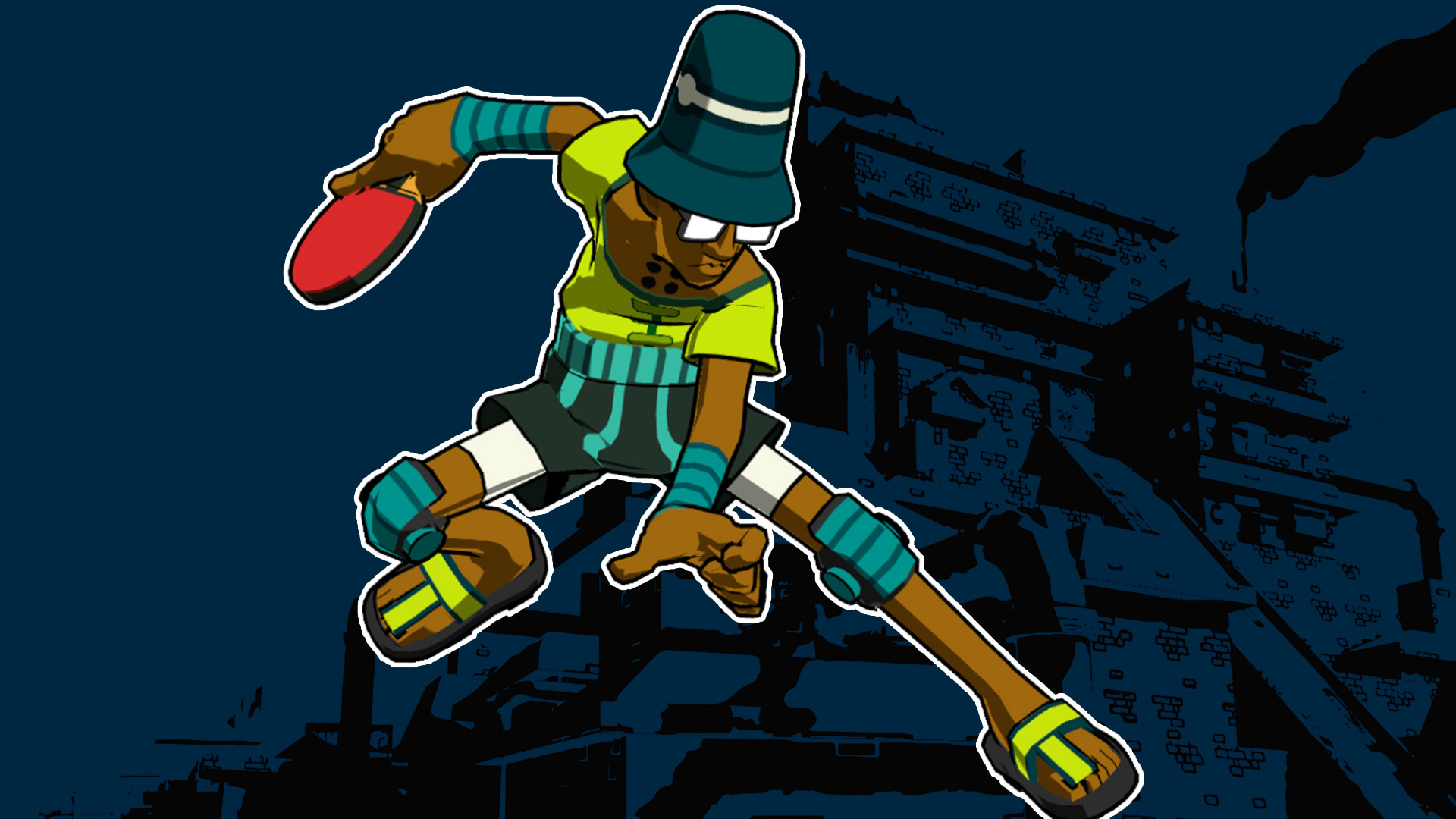
Truthfully, the story mode is a tad boring in comparison to the gameplay, but it serves the dual purpose of a.) allowing players to unlock stuff in a more interesting fashion and b.) sample all the different characters to see what’s what. The most famous of the underground leagues is the titular Lethal League, and the story mode of the game follows some of the characters as they seek to understand more about the world around them, continue to enjoy the sport they love, and fight for some funky freedom in a world gone mad. Naturally, the ban made people more interested to play it, so an underground competition started.

Unfortunately, the game was deemed to be too dangerous because one person died in the process of playing it (seriously, just one?), and it was banned across the board. Set in a future where things are generally bad, the people of this broken metropolis of Shine City develop a new sport that combines all the risk and speed of jai alai with the insanity of arena league baseball, and lo, it was good. But what if things were stripped down to a more simplistic and direct design? One where all you needed to understand was “Don’t get hit?” Perhaps that’s the thing that I find so appealing about Team Reptile’s dystopian sport, Lethal League Blaze, and why I’ve been addicted to getting my behind stomped online. I still enjoyed them, and still do to this day, but I tend to shy away from the online scene and the competitive areas due to me not being able to understand everything I need to do. Thinking back to the times where I saw my butt handed to me eight consecutive times by someone who played Voldo without using the joystick at all, it became clear that there was a ton of strategy and planning that went into fighting games. Learning everyone’s quirks and special attacks is vital to success, and since they’re all a blast to play, it doesn’t take long before you’re leaping up to volley a Mach-9 Sonata trickshot.The most difficult aspect of getting better at fighting games, at least from my vantage point, has been working out the sheer number of potential combos, counters and sequences needed to succeed. Candyman’s thin cane, for example, hits the ball in a narrow sine-wave pattern, while Dice’s ping pong racket favors a more obtuse trajectory. Their designs all speak on how their special moves will work, and to a degree even the kind of angles they’ll hit the ball at. Lethal League Blaze has no shortage of memorable and well-designed fighters, with Candyman being by far the most iconic. Just take a look at Overwatch, which sees a huge influx of returning players just for the next Widowmaker re-skin. The entire original soundtrack is as good as any high-energy electro score out there and it alone is almost reason enough to give the game a try.Ĭharacter design can go a long way towards a game’s success. Speaking of Jet Set Radio, composer Hideki Naganuma contributes one of the game’s best tracks, “Ain’t Nothin’ Like A Funky Beat,” featured in the subway level. Even matches where I was getting completely rocked were an intense thrill-ride just because the game is so pleasant to look at and experience. With graphics that are a distant cousin to Jet Set Radioand music that bangs, bops, and slaps, it’s a feast for the senses.

This is all to say nothing of the presentation of Lethal League Blaze. The catch is, when the ball is going fast enough, a hit is liable to take upwards of a second and a half to come off an opponent’s “bat.” This gives you time to re-assess, re-position, and prepare to catch a bullet like one of those old-timey magicians. A diverse cast of characters smacks a ball about a rectangular room at varying angles and speeds until it hits an opponent.


It’s essentially Pong, if Pong was a fighting game ala BlazBlue. Lethal League Blaze is a simple, if unique, game. What would make grown men exclaim in surprise into the wee hours of the night? The short answer is lots of hit-stop, but the long answer is tooth-and-nail battles of attrition hitting a supersonic baseball at each other within the confines of a padded cell. With new mechanics, characters, modes, and an all-new story campaign, it’s the perfect follow up to a game desperate for some extra polish.īack to that ridiculous (and true) exchange from before. Addressing issues of limited content, sparse connectivity, and generalized rough edges, Blaze is more of the same and then some. It flew right under my radar, but I had heard of it by the time Blaze was set to drop. Lethal League Blaze is the follow up to 2014’s Lethal League, a game almost nobody played but which was much-loved by its niche community.


 0 kommentar(er)
0 kommentar(er)
